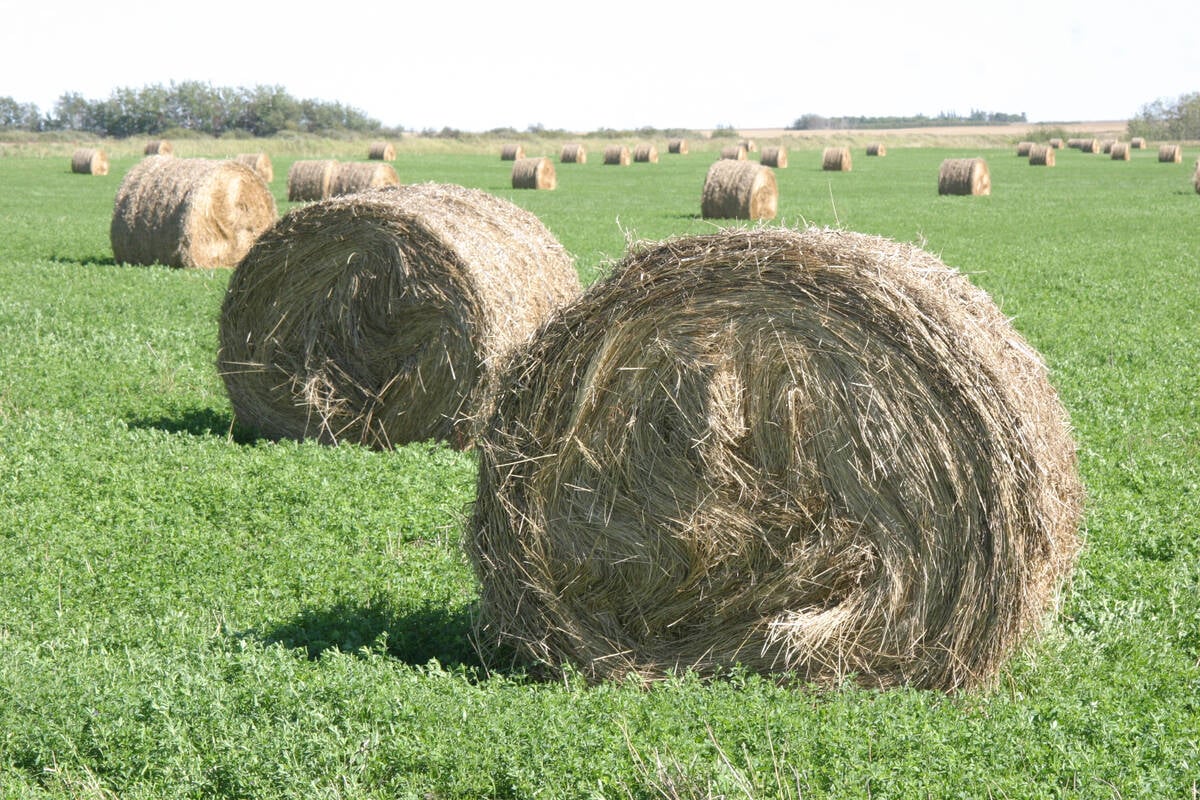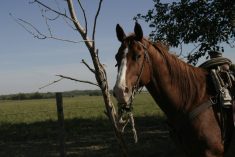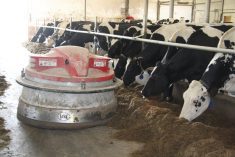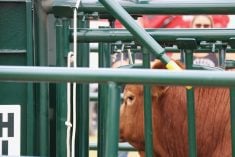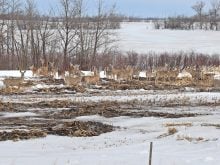It’s that time of year when it is important to start planning for a cow herd’s winter feeding program. I’ve written about the importance of feed testing multiple times in this column, and this is my latest version of the six steps that I think are necessary to consider when getting your feed tested this year.
Assess your feed inventory
This step seems rudimentary, but it is important to understand how much of each feed resource you have available to feed.
Read Also

Global meat packer prepares for cattle shortage
Brazilian meat packer JBS is preparing for a likely shift in the country’s cattle cycle that could lead to reduced availability of animals for slaughter next year.
There is no sense planning to use one particular feed source for the entire winter if you only have enough to last one month.
Part of the planning process will be to determine if you need to purchase other feed or if you can only use certain feed for part of the winter-feeding season.
This step may need to be repeated after your feed testing results are in because the quality of feed will have a major impact on the amount of feed to be delivered and consumed daily.
Obtain a representative sample of all feed that you will be using
This is a fairly important step and will take some time to do correctly.
There can be a lot of variation across different areas within a field of forage, and therefore it’s important to get a representative sample for each type of feed that might be used in your winter rations.
If your forage is baled, most experts suggest sampling at least 20 bales in total from different parts of the field and not just the bales that are readily accessible.
Grabbing samples by hand will not provide representative results for feed testing. You will need to use a forage probe for bales and will want to obtain cores that are 12 to 15 inches into the bale.
Forage probes are available for purchase online and at some feed supply stores, or they can sometimes be borrowed from agriculture extension offices, local forage association offices, nutritionists or veterinarians.
If you are sampling a silage pit, you may need a longer probe, and you will want to brush off the outer loose silage and sample from the face of the pit in the four different quadrants, taking five samples per quadrant.
Sampling grazing swaths will involve taking whole plants from multiple swaths in different areas of the field.
I like to take a plastic bin out with me to the bales or silage pit when I obtain my core samples and then place each of the core samples in the plastic bin as I sample the bales.
I can then thoroughly mix all the samples together and place a subsample of the mixed feed sample into a zip-lock plastic bag with a label on it to send to the lab for testing.
Submit your samples to a laboratory for testing
Feed testing services are widely available across Canada from several laboratories. Most of them will have some sort of forage analysis package that producers could choose to have performed.
Although there are many variations, the minimum should include dry matter, crude protein, acid detergent fibre (ADF), neutral detergent fibre (NDF), calcium, phosphorus, potassium and magnesium.
Producers may also want to add nitrate levels to their laboratory request if they are feeding annual forage that is susceptible to high nitrate levels.
A local livestock extension specialist would be a good person to talk to if there are questions about submitting samples.
If you are feeding some sort of annual forage or anything out of the ordinary, you should make sure that the laboratory is using a wet chemistry analysis rather than near infrared spectroscopy (NIRS).
NIRS uses wave lengths of light to approximate the nutrient values in a feed stuff, but it becomes much less accurate in feed that is not analyzed on a regular basis and gives less accurate results on mineral levels than what wet chemistry analysis provides.
Wet chemistry analysis tends to be a bit more expensive, but the more accurate results are usually worth the slight increase in cost, especially for unusual feedstuffs.
Evaluate and plan your ration
Feed testing is of little use if you don’t take the results and do something with them. You might be able to get help from a local livestock extension specialist, a nutritionist or a veterinarian for this component of the project.
Cowbytes is an easy-to-learn software program for beef cattle that is available to purchase from the Beef Cattle Research Council.
There is also a very simple and easy-to-use online feed sample evaluator available at the Beef Cattle Research Council website that will help evaluate a potential ration at a basic level.
Remember that you are going to have to create multiple winter rations for your herd because multiple feeding groups will have significant variations in nutrient demands:
- Mature cows in good body condition.
- Replacement heifers and first calf heifers that are still growing and have higher protein and energy requirements.
- Mature cows that are thin or are in poor condition; sometimes these can be pooled with the heifer group.
You will also need to plan different rations for each of these groups at different stages of gestation. They will depend on calving dates, but the nutritional demands of cows in mid-gestation are very different from cows in late gestation, and these requirements increase even more after calving and lactation begins.
In addition, you will have to take into account environmental conditions and cold temperatures as the weather changes throughout the winter feeding period.
You will probably need a mid-gestation ration, late-gestation ration and a post-calving ration for each of your feeding groups, but this may vary depending on the timing of calving season.
Adapt the ‘paper’ ration to real life feeding instructions
The software programs that we use often tend to give us the amount (weight) of various feedstuffs that an individual animal must consume. However, we feed groups of cows, not individuals.
You now will have to take the ration that was created by a computer software program or online calculator and adapt it for real life. This will require some simple math and perhaps some compromises along the way.
You should make sure to account for feedstuff waste, which may vary depending on how the ration is delivered.
You will need some estimates of weights of bales and you may need to figure out what a bucketload of silage weighs or other feedstuff weights.
You will have to translate ounces of mineral per cow per day to bags of mineral per feeding group per week.
You need to take that computerized ration and convert it into something that everybody can understand in terms of number of bales, bags of mineral or bucketloads of silage.
Monitor and adapt if necessary
Despite all this planning, cows don’t always eat the way we expect them to.
There’s an old saying that there are three different rations:
- The ration we design on paper.
- The ration that we deliver to the herd.
- The ration that the cows actually eat.
We need to monitor body condition scores on an ongoing basis, monitor feed and mineral consumption, and perhaps even evaluate mineral levels at some point by using blood samples or liver biopsies.
You may need to adapt your rations if the weather is extremely cold or if the cows are not maintaining body condition as expected.
John Campbell is a professor in the department of Large Animal Clinical Sciences at the University of Saskatchewan’s Western College of Veterinary Medicine.

